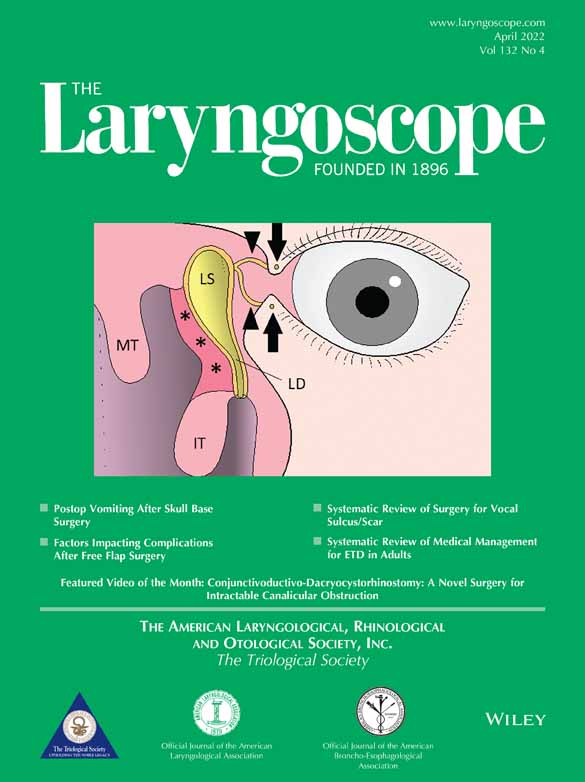Utility of Telemedicine for Diagnosis and Management of Laryngology-Related Complaints during COVID-19
Editor's Note: This Manuscript was accepted for publication on August 2, 2021.
The authors have no funding, financial relationships, or conflicts of interest to disclose.
Abstract
Objectives/Hypothesis
To investigate the concordance in diagnosis and management between initial telemedicine visits and subsequent in-person visits with laryngoscopy for laryngology-related complaints during COVID-19.
Study Design
Retrospective cohort study.
Methods
Patients who presented to a tertiary care center with laryngology-related complaints (voice, swallowing, airway, general throat complaints and others) and completed initial telemedicine visits and subsequent in-person visits with laryngoscopy between March and October 2020 were included (n = 250). Preliminary diagnoses and managements provided during initial telemedicine visits were compared with the diagnoses and managements during subsequent in-person visits with laryngoscopy. Multivariable logistic regression analysis was performed to compare concordance rates in diagnosis and management by chief complaint categories after adjusting for relevant demographic and clinical factors.
Results
Overall concordance rates in diagnosis and management between the initial telemedicine visit and subsequent laryngoscopy exam were 86.1% and 93.7%, respectively. Mean (standard deviation) days until laryngoscopy from the initial visit were 21.2 (23.0). Concordance rates were not associated with patient's age, gender, preferred language, provider, telemedicine visit duration, or days until laryngoscopy. Management concordance rate was relatively lower among patients with general throat complaints in comparison with voice-related complaints (odds ratio: 0.27; 95% confidence interval: 0.08–0.90). Management changes after laryngoscopy included need for further imaging, procedures, voice therapy, and referral to other specialists.
Conclusion
Concordance rates in diagnosis and management remained high between the initial telemedicine visit and subsequent in-person visit with laryngoscopy for new patients presenting with laryngology-related complaints during the COVID-19 pandemic. While laryngoscopy is still essential to confirm diagnosis and provide appropriate management, telemedicine may be a feasible alternative to provide suitable empiric therapy until laryngoscopy can be safely performed.
Level of Evidence
4 Laryngoscope, 132:831–837, 2022




